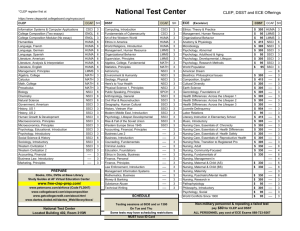Department of History - Full Assessment Report (Fall 2014) For the
advertisement
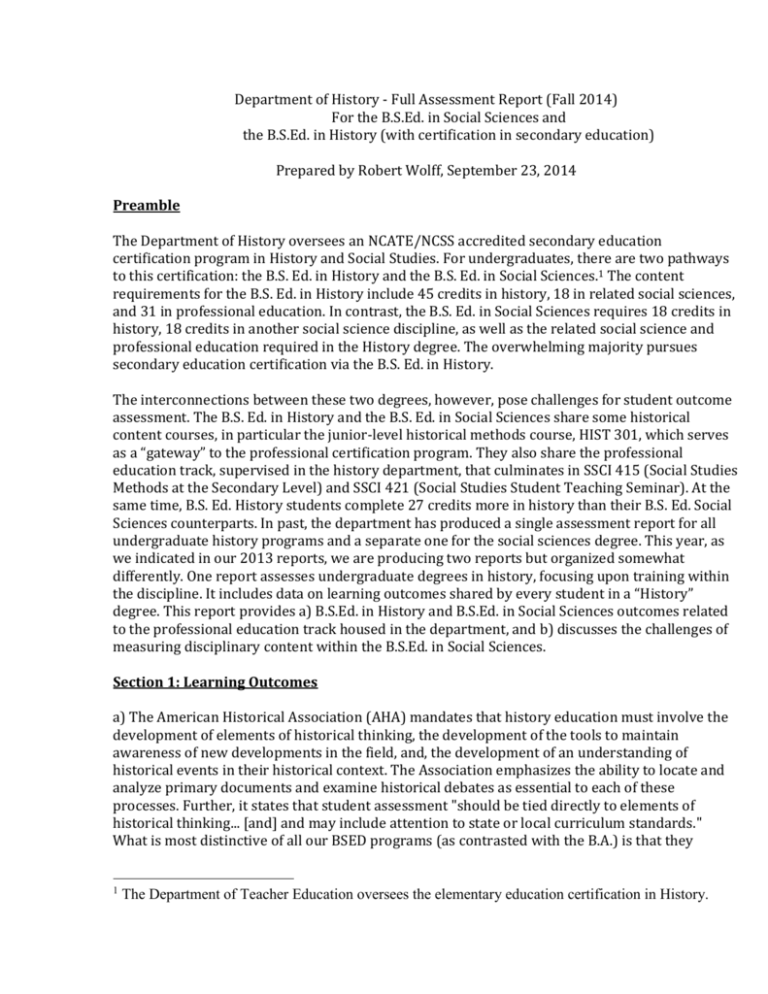
Department of History - Full Assessment Report (Fall 2014) For the B.S.Ed. in Social Sciences and the B.S.Ed. in History (with certification in secondary education) Prepared by Robert Wolff, September 23, 2014 Preamble The Department of History oversees an NCATE/NCSS accredited secondary education certification program in History and Social Studies. For undergraduates, there are two pathways to this certification: the B.S. Ed. in History and the B.S. Ed. in Social Sciences.1 The content requirements for the B.S. Ed. in History include 45 credits in history, 18 in related social sciences, and 31 in professional education. In contrast, the B.S. Ed. in Social Sciences requires 18 credits in history, 18 credits in another social science discipline, as well as the related social science and professional education required in the History degree. The overwhelming majority pursues secondary education certification via the B.S. Ed. in History. The interconnections between these two degrees, however, pose challenges for student outcome assessment. The B.S. Ed. in History and the B.S. Ed. in Social Sciences share some historical content courses, in particular the junior-level historical methods course, HIST 301, which serves as a “gateway” to the professional certification program. They also share the professional education track, supervised in the history department, that culminates in SSCI 415 (Social Studies Methods at the Secondary Level) and SSCI 421 (Social Studies Student Teaching Seminar). At the same time, B.S. Ed. History students complete 27 credits more in history than their B.S. Ed. Social Sciences counterparts. In past, the department has produced a single assessment report for all undergraduate history programs and a separate one for the social sciences degree. This year, as we indicated in our 2013 reports, we are producing two reports but organized somewhat differently. One report assesses undergraduate degrees in history, focusing upon training within the discipline. It includes data on learning outcomes shared by every student in a “History” degree. This report provides a) B.S.Ed. in History and B.S.Ed. in Social Sciences outcomes related to the professional education track housed in the department, and b) discusses the challenges of measuring disciplinary content within the B.S.Ed. in Social Sciences. Section 1: Learning Outcomes a) The American Historical Association (AHA) mandates that history education must involve the development of elements of historical thinking, the development of the tools to maintain awareness of new developments in the field, and, the development of an understanding of historical events in their historical context. The Association emphasizes the ability to locate and analyze primary documents and examine historical debates as essential to each of these processes. Further, it states that student assessment "should be tied directly to elements of historical thinking... [and] and may include attention to state or local curriculum standards." What is most distinctive of all our BSED programs (as contrasted with the B.A.) is that they 1 The Department of Teacher Education oversees the elementary education certification in History. 2 culminate in a 16-week student teaching experience. As such, the expected learning outcomes for the BSED include the four in the BA, plus one additional one: By the time of graduation, recipients of the BSED-Social Sciences (Secondary Ed.) will be able to: 1) 2) 3) 4) 5) Evaluate and analyze primary source evidence Frame historical questions based on multiple perspectives Demonstrate awareness of interpretive differences Develop an interpretation based on appropriate evidence Produce lessons plans that meet standards established by the National Council of Social Studies (#5) Finally, teaching candidates, or "TC's" hereafter are evaluated in a number of different areas, including ability to improve their students' classroom learning. b) There are no learning outcomes for the content of the B.S.Ed. Social Sciences per se, although the small number of students pursuing this option for secondary education certification appears in data collected for history majors. It is not possible given our current data collection process to disaggregate these students from the larger pool. If the Academic Assessment Committee recommends that the department do so, the logical point of collection would be HIST 301 because it is a gateway course. LO #1-4 could be assessed in this manner, although the number would be very small in any semester. Any discussion about collecting learning data from the 18 credits in a related social science would be problematic given the small number and lack of comparability across disciplines. In other words, data collected from a student with 18 credits in Geography would probably be very different than data collected from a student concentrating in Political Science. Section 2: Findings a) Learning Outcome #5 (Lesson Plans): Because the B.S.Ed. in History and B.S.Ed in Social Sciences are accredited by NCATE (National Council for the Accreditation of Teacher Education)2 and NCSS (National Council for the Social Studies), both of which require copious assessment data, the departmental assessment committee opted to look at a small pool of data from Spring 2014 collected from SSCI 415 “Unit Plans” developed by prospective student teachers that directly addresses LO #5. Themes/Historiography Lesson Plan Content Primary Source Utilization Essential Questions Objectives 2 Target 2 2 2 3 2 Acceptable 4 7 5 6 5 Unacceptable 3 0 2 0 2 Now the CAEP (Council for the Accreditation of Educator Preparation). 2 3 Learning Activities 2 6 1 b) See above section. Section 3: Analysis a) Only nine students enrolled in SSCI 415 during the Spring 2014 semester, which limits the conclusions that can be drawn. Two of those students were in the B.S.Ed. Social Sciences, but there are no significant differences between their scores and those of their peers in the B.S.Ed. History. Future data collection may shed further light upon this. Still, despite what the departmental assessment committee sees as very high standards, the overwhelming majority of students in the two programs perform at target or acceptable levels. It is also worth noting that the first dimension listed above, “Themes/Historiography,” relates closely to the question of “interpretive differences” assessed in our larger History report. Weaknesses in this area are indicative of a larger issue. b) The absence of content data from outside the history department seems like a problem without a simple solution. There are so few students pursuing the B.S.Ed. Social Sciences that it will likely prove impossible to generate meaningful data even over a period of several years. It should also be added that these data on the B.S.Ed. programs also include some students who are not undergraduates, but rather post-baccalaureates. Section 4: Use of Results a) Because these two programs are accredited independently, the Departmental Assessment Committee is content to gather further data on the Unit Plans. b) The Departmental Assessment Committee plans to propose a departmental discussion on the B.S.Ed. Social Sciences to determine if it should eliminated in favor of a postbaccalaureate-only certification track. Section 6: a) The department does not plan to create a separate, detailed assessment plan for these two programs as one already exists for maintaining accreditation. b) A detailed plan for assessing content in the B.S.Ed. Social Sciences is on hold pending the outcome of the conversation discussed above in Section 4b. 3
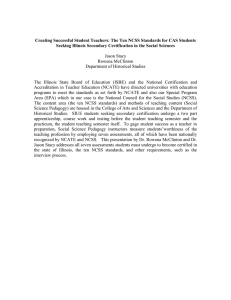

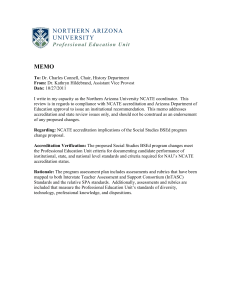
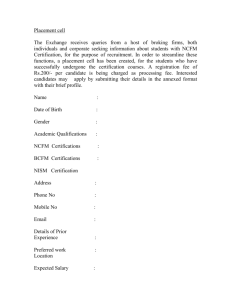
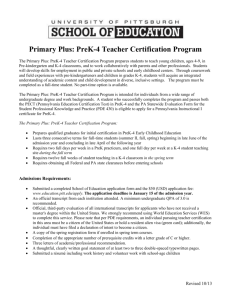
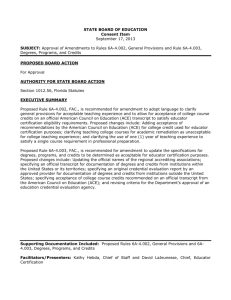
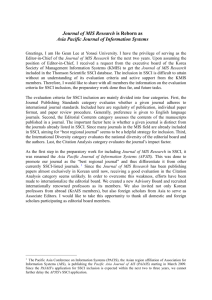
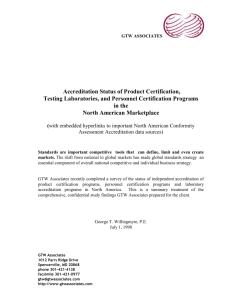
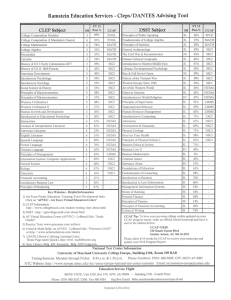
![最新重要發表 [1] Shin-Yuan Hung, Wei-His Hung, Chia](http://s3.studylib.net/store/data/008565866_1-430dbcbd0b26a25efbcc9b288442da18-300x300.png)
